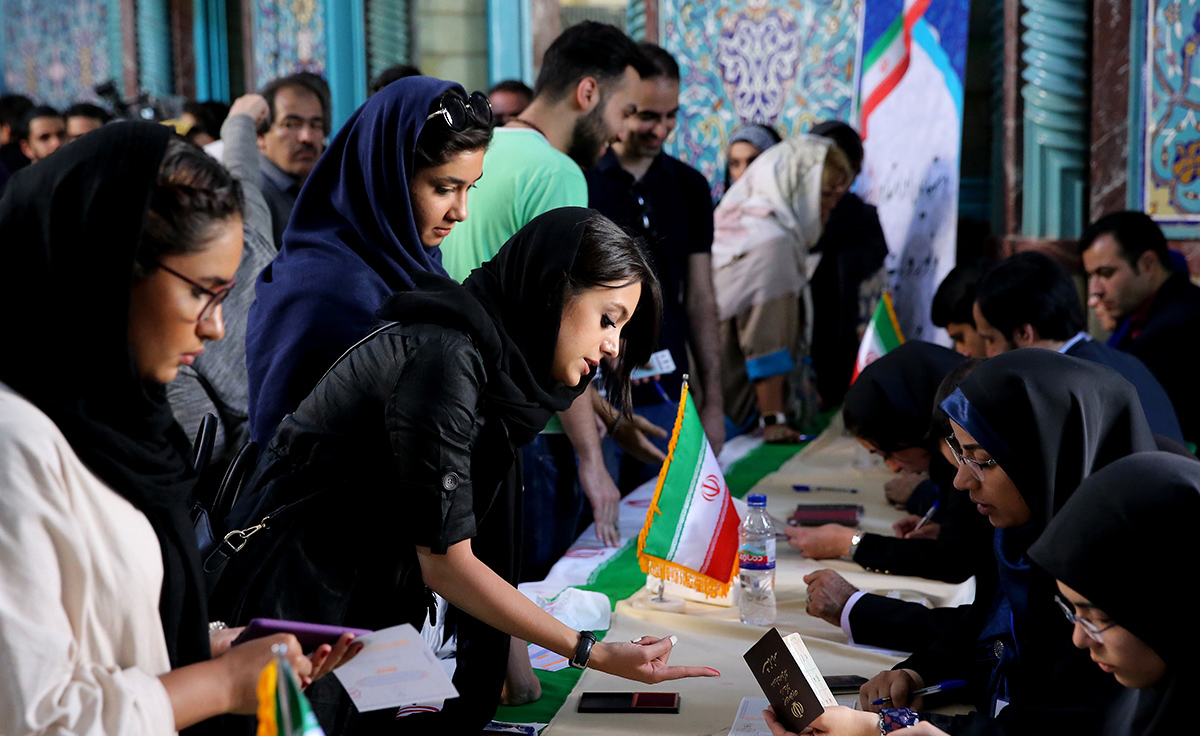“Which country said ‘no’ to a referendum on giving cash handouts? Norway? Switzerland? Iran?”
“Remember when we envied Swiss rejection of dole-for-all last year? Now you can stand tall and boast that Iranian people have turned down the offer of receiving swollen cash payments.”
These were some of the text messages relayed by jubilant Iranians as the presidential election results came out on Saturday, in which a majority rebuffed promises of a populist campaign.
Increasing cash subsidies was a platform pushed by President Hassan Rouhani’s challengers, namely Ebrahim Raeisi and Mohammad Baqer Qalibaf, during a month leading to the May 19 elections.
Demagogic promises were flashed by the duo regardless of the fact that the implementation of such plans would spell disaster for the country’s economy and people’s wellbeing.
Eminent Iranian economist, Mousa Ghaninejad, had warned the candidates and those who rooted for them against campaigning on these promises.
“Given the country’s limited resources, such populist initiatives would threaten the business environment and preclude foreign investment. All these may well come back to bite the people who vote for populists in the form of runaway inflation and unemployment,” he told the Persian publication Tejarat-e Farda weekly.
His comments echoed the remarks of government officials and many parliamentarians as well as two reports by Supreme Audit Court of Iran and Majlis Research Center, all stressing that doubling or tripling cash subsidies is only possible by increasing the prices of energy carriers.
The Budget Law for the new Iranian year (started March 21) has set total revenues of Subsidy Reform Plan at 480 trillion rials ($12.63 billion). To quadruple the subsidy handouts (as promised by Raeisi), revenues must increase to 1,920 trillion rials ($50.52 billion), which require multiplying the prices of gasoline, natural gas, electricity and water, the research by Supreme Audit Court read.
And based on a study by the Iranian Parliament, a 500,000-rial ($13.3) rise in cash subsidy payments for each Iranian will result in a 6.4% increase in consumer price index the following year, pushing up the inflation rate from 11.2% to 17.6% by the end of the current Iranian year (March 20, 2018).
“The country’s development budget over the past five years swung from 130 trillion rials to 270 trillion rials ($3.46 billion-$7.2 billion), which means government revenues were spent on the subsidy plan instead of going into public services, development projects, including rail and road,” economist Mohammad-Hossein Sharif-Zadegan said.
“The road to poverty alleviation and empowering low-income citizens does not pass through multiplying subsidy payments. Economics is a science of scarcity and opportunity cost. Therefore, it is vital to think about the resources needed in the first place.”
Sharif-Zadegan noted that adopting an approach that makes people accustomed to government handouts is below the nation’s dignity.
“Instead, the government should help bolster production, employment and entrepreneurship,” he added.
These arguments have likely hit home with Iranian electorate who saw their purchasing power decline by 25% from 2010 to 2013.
They heard their officials complaining about tight development budget, that the country needs at least $40 billion to complete 258 major unfinished transportation projects across the country. And thankfully, they rejected the populist candidates and selected Rouhani again.



